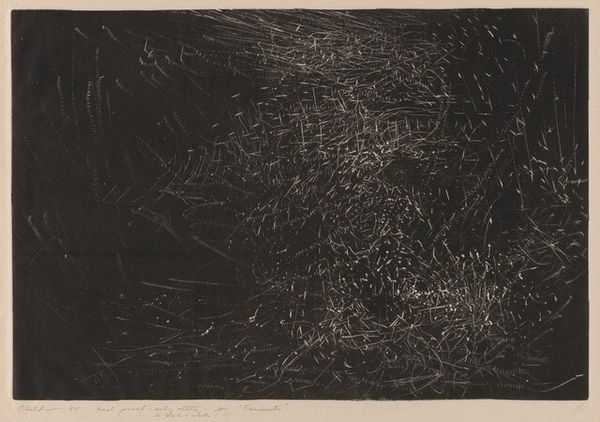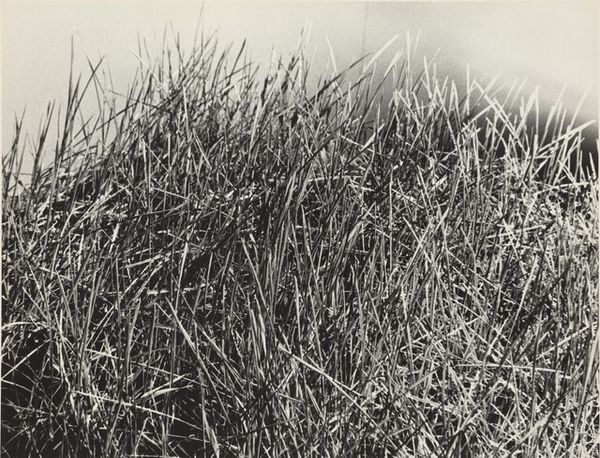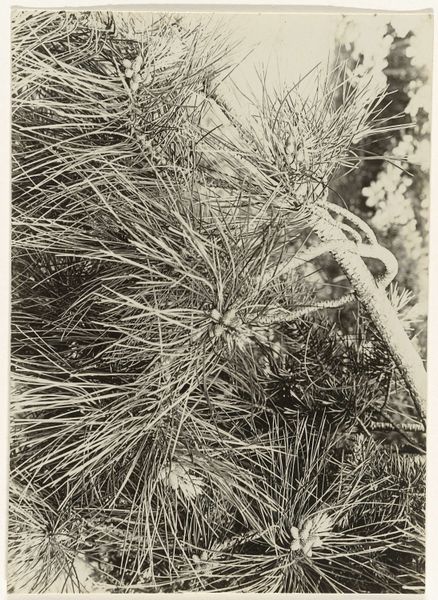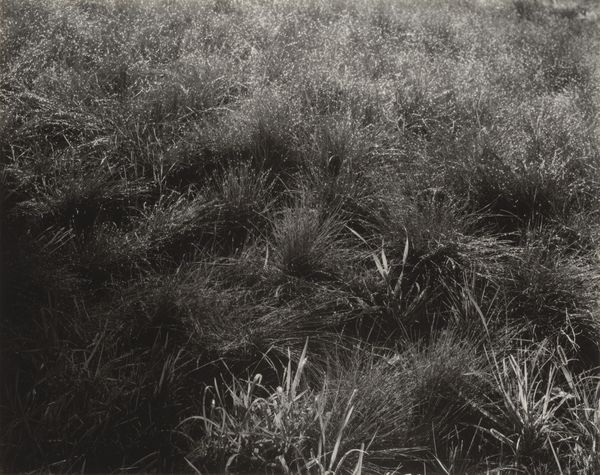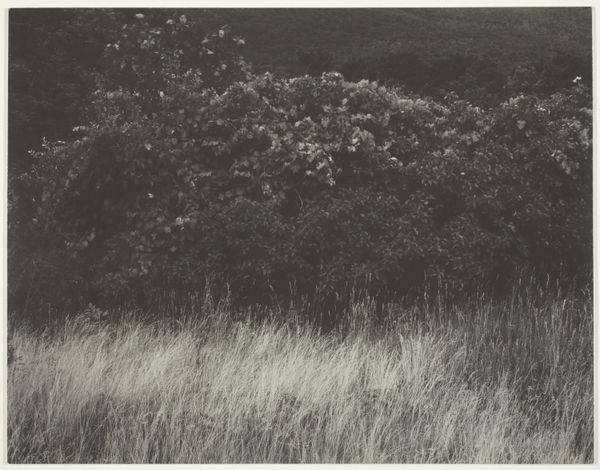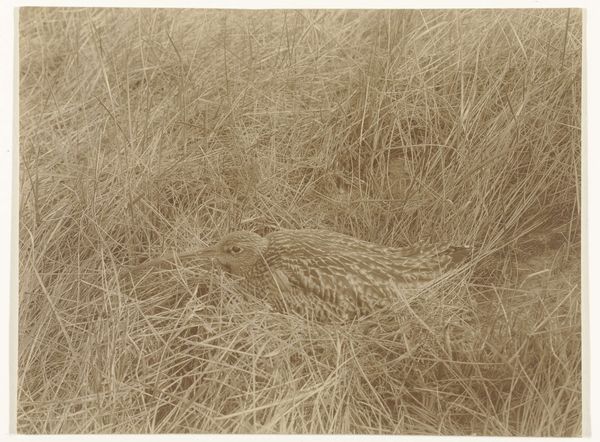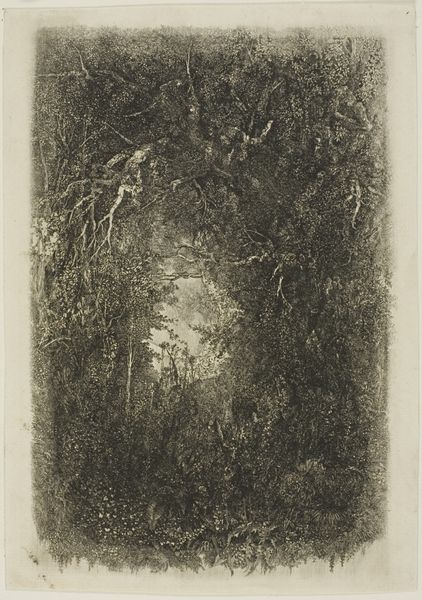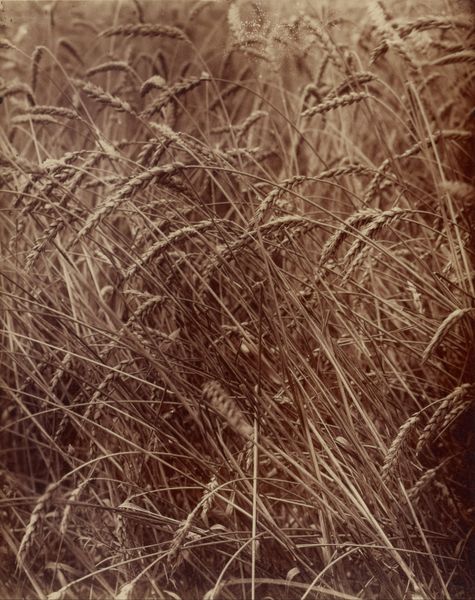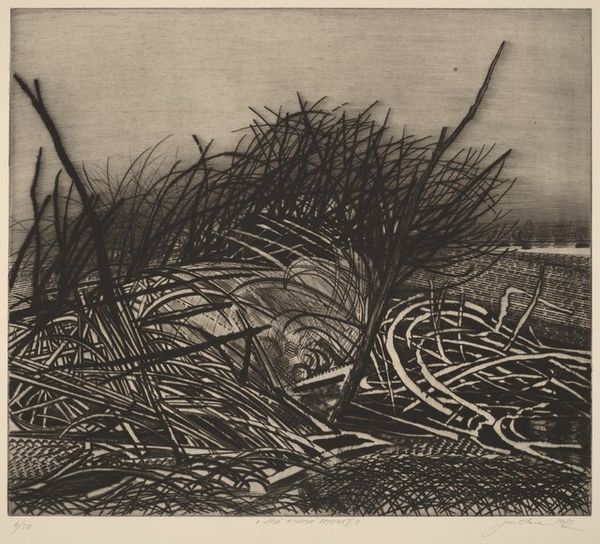
Dimensions: 8.9 × 11.6 cm (image/paper/first mount); 31.6 × 25.5 cm (second mount)
Copyright: Public Domain
Curator: Let's turn our attention to Alfred Stieglitz's photography. This silver print on paper, created in 1927, is titled "Equivalent." Editor: It feels surprisingly peaceful. The density of forms is almost overwhelming at first glance, but the overall tone is soft, calm, and subtly powerful. Is that cloud formation? Curator: Well, yes and no. Stieglitz intended these photographs of clouds to function as equivalents for his own emotions, for his interior state, you see. He was trying to move photography beyond merely recording the visible world. Editor: So the formal composition, the density of the print...that wasn't arbitrary? He manipulated the tonal range here quite considerably. How did Stieglitz’s work as a gallerist shape this photographic series? Curator: Precisely. He aimed for photography to be viewed on par with painting and sculpture. Stieglitz manipulated the printing process to evoke particular emotional resonances, believing that emotional truths could be conveyed through abstraction. This elevates photography to the conceptual level of "high art." Stieglitz’s gallery provided a platform for photographers. His championing of artistic photography raised its status to compete with other mediums of art. Editor: Fascinating. It reminds me a bit of Symbolist poetry actually. A search for transcendent meaning. In some ways it's a turn away from strict realism. I’m curious about this specific image’s appeal for organic shape; does it point towards freedom of expression? Curator: Absolutely. Stieglitz pushed back against the purely representational role photography held until then. It highlights organic forms; through his technical expertise he’s suggesting something more—a metaphor perhaps. His approach challenges us to question the artist's control and intention in image-making. Editor: That adds another layer of appreciation for me. This piece is an embodiment of inner expression through organic forms, which helps it convey emotion and feeling beyond the literal depiction of clouds. Curator: Indeed, we start with materials, processes and an image transforms beyond objective representation to capture the subjective world of emotions, something akin to pictorial poetry. Editor: I see this now more as an echo of shared human experiences in a landscape. Thank you!
Comments
No comments
Be the first to comment and join the conversation on the ultimate creative platform.


